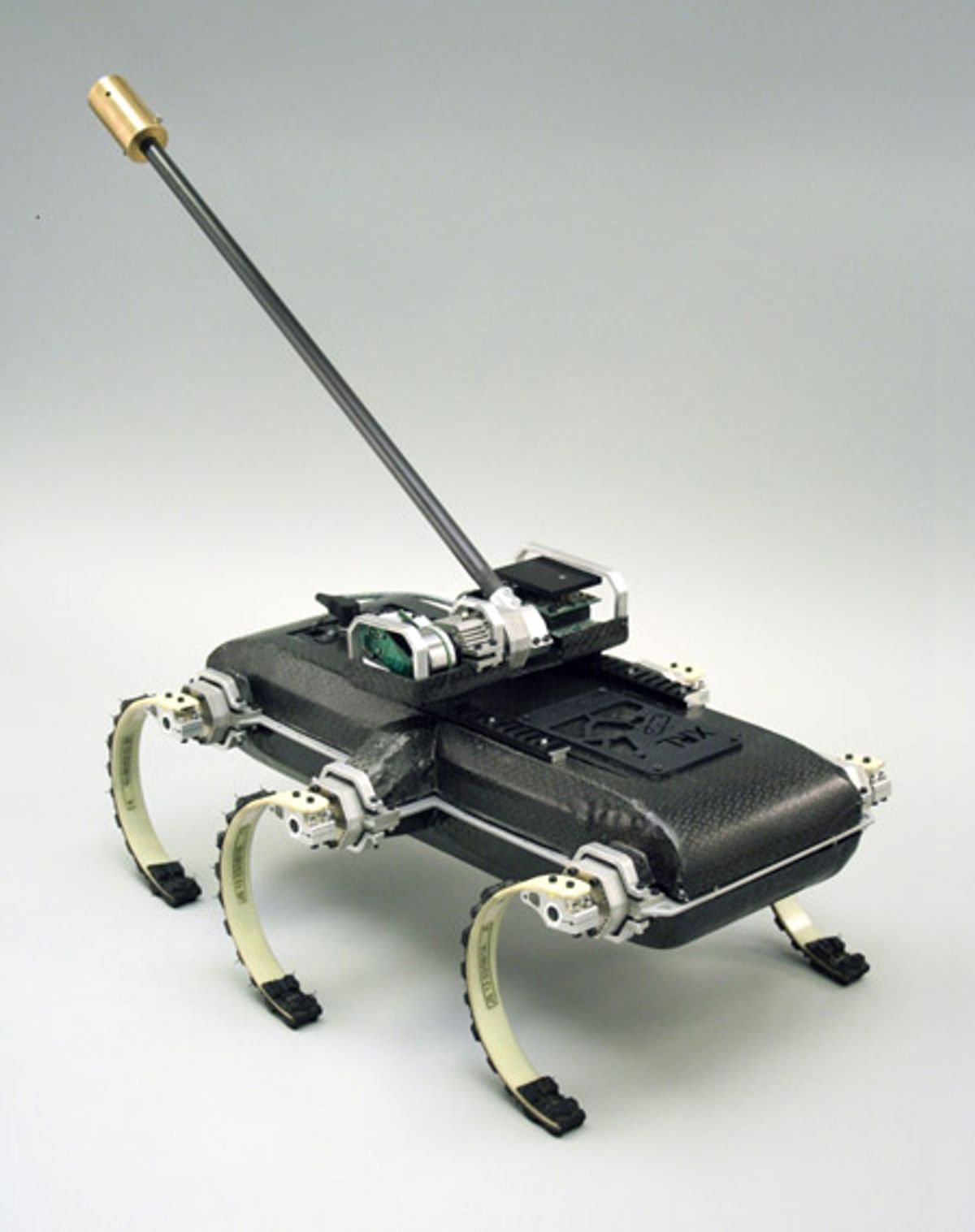In January, we wrote about some spectacular research from UC Berkeley exploring what happens when you give a little wheeled robot a controllable tail, like a lizard. As it turns out, robots with tails can fly through the air while maintaining their orientation, and now other robotic platforms are testing out this technique, thanks to a collaboration between UC Berkeley and the University of Pennsylvania.
The bot in the picture above is X-RHex Lite, or XRL for short. It should look a little bit familiar: just like EduBot and SandBot, it's based on RHex, UPenn's original legged hexapod, except with a lighter and more modular design. The new bit is, of course, the actuated tail, which gives XRL the ability to right itself in midair when dropped at weird angles, as well as (towards the end of the vid) a way of maintaining its orientation as it runs off a ledge:
It doesn't come through in the video just how big XRL is, especially compared to the original Tailbot. Tailbot weighed 177 grams, while XRL tips the scales at 8.1 kilograms, making XRL about 60 times more massive. Here's a comparison pic to give you a better sense of scale:
As we've mentioned before, there's a huge amount of potential here for mobile robots with tails, from things like FirstLooks to Sand Fleas, and XRL marks a transition point between proof-of-concept and potentially operational platform. XRL is also particularly suited to these midair shenanigans due to its six springy legs, which act like excellent shock absorbers, as long as you can convince the robot to land on them the right way.
It's definitely true that adding a big long tail with a weight on the end plus a hefty actuator increases the complexity of robots like these, but there are ways to turn this into a positive thing. For example, you could use the tail as an antenna, a mast for a camera, or as A LANCE WITH WHICH TO IMPALE OTHER ROBOTS, ROBOMEDIEVAL-STYLE. BWAHAHAHAHA! Or, you know, not. Just tryin' to be helpful over here.
Tail Assisted Dynamic Self Righting, by Aaron M. Johnson, Thomas Libby, Evan Chang-Siu, Masayoshi Tomizuka, Robert J. Full, and D. E. Koditschek from the University of Pennsylvania and the University of California, Berkeley was presented last week at CLAWAR 2012.
[ Kodlab ]
Thanks Tom!
Evan Ackerman is a senior editor at IEEE Spectrum. Since 2007, he has written over 6,000 articles on robotics and technology. He has a degree in Martian geology and is excellent at playing bagpipes.




